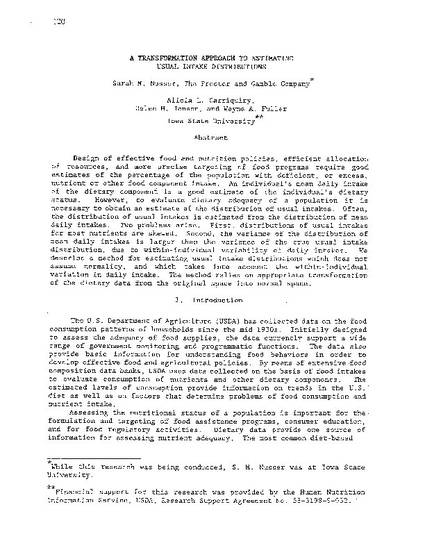
Design of effective food and nutrition policies, efficient allocation of resources, and more precise targeting of food programs require good estimates of the percentage of the population with deficient, or excess, nutrient or other food component intake. An individual's mean daily intake of the dietary component is a good estimate of the individual's dietary status. However, to evaluate dietary adequacy of a population it is necessary to obtain an estimate of the distribution of usual intakes. Often, the distribution of usual intakes is estimated from the distribution of mean daily intakes. Two problems arise. First, distributions of usual intakes for most nutrients are skewed. Second, the variance of the distribution of mean daily intakes is larger than the variance of the true usual intake. distribution, due to within- individual variability of daily intakes. We describe a method for estimating usual intake distributions which does not assume normality, and which takes into account the within-individual variation in daily intake. The method relies on appropriate transformation of the dietary data from the original space into normal space.
- food policies,
- nutrition policies
Available at: http://works.bepress.com/alicia_carriquiry/74/
